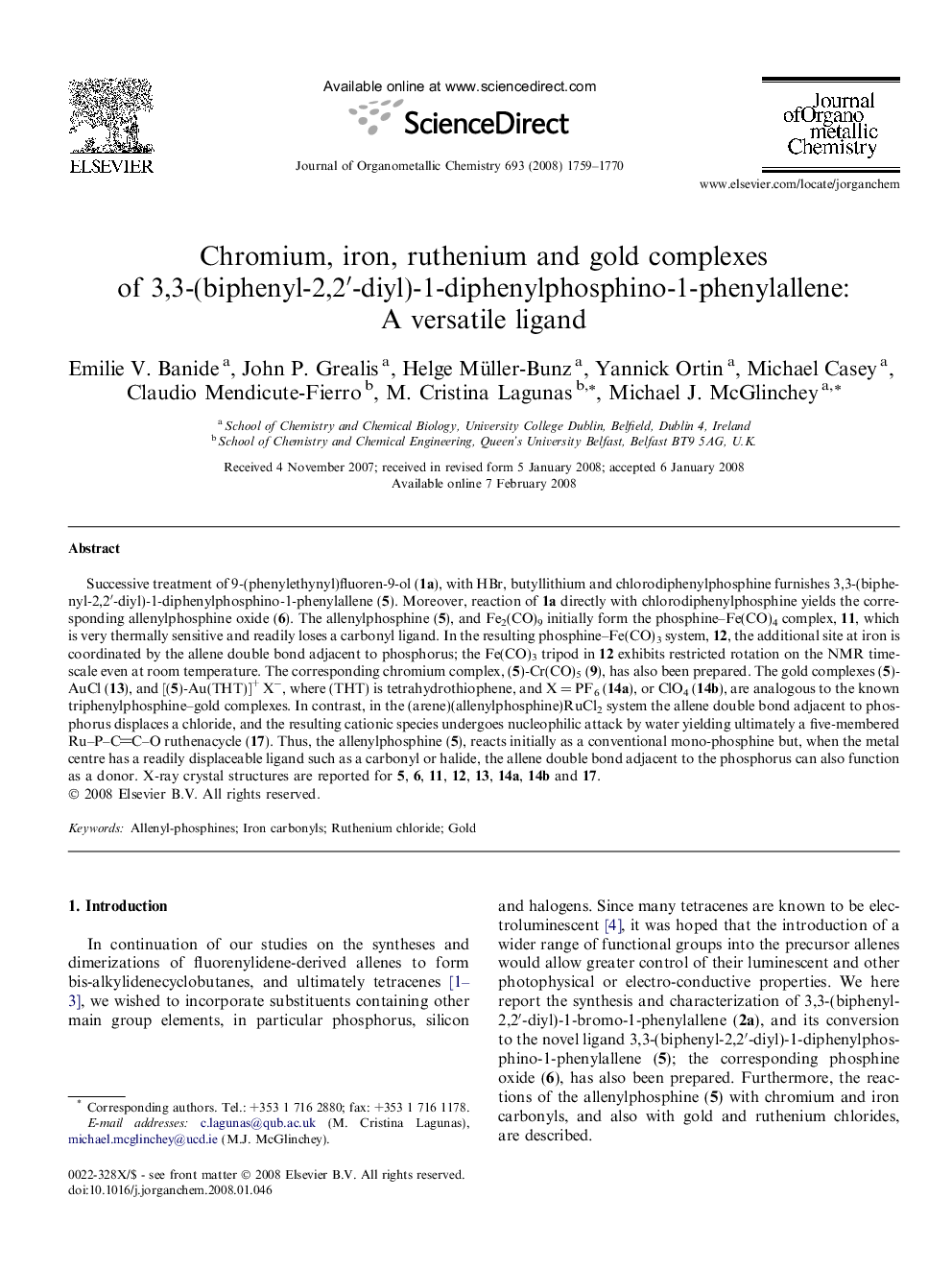| کد مقاله | کد نشریه | سال انتشار | مقاله انگلیسی | نسخه تمام متن |
|---|---|---|---|---|
| 1324943 | 977361 | 2008 | 12 صفحه PDF | دانلود رایگان |

Successive treatment of 9-(phenylethynyl)fluoren-9-ol (1a), with HBr, butyllithium and chlorodiphenylphosphine furnishes 3,3-(biphenyl-2,2′-diyl)-1-diphenylphosphino-1-phenylallene (5). Moreover, reaction of 1a directly with chlorodiphenylphosphine yields the corresponding allenylphosphine oxide (6). The allenylphosphine (5), and Fe2(CO)9 initially form the phosphine–Fe(CO)4 complex, 11, which is very thermally sensitive and readily loses a carbonyl ligand. In the resulting phosphine–Fe(CO)3 system, 12, the additional site at iron is coordinated by the allene double bond adjacent to phosphorus; the Fe(CO)3 tripod in 12 exhibits restricted rotation on the NMR time-scale even at room temperature. The corresponding chromium complex, (5)-Cr(CO)5 (9), has also been prepared. The gold complexes (5)-AuCl (13), and [(5)-Au(THT)]+ X−, where (THT) is tetrahydrothiophene, and X = PF6 (14a), or ClO4 (14b), are analogous to the known triphenylphosphine–gold complexes. In contrast, in the (arene)(allenylphosphine)RuCl2 system the allene double bond adjacent to phosphorus displaces a chloride, and the resulting cationic species undergoes nucleophilic attack by water yielding ultimately a five-membered Ru–P–CC–O ruthenacycle (17). Thus, the allenylphosphine (5), reacts initially as a conventional mono-phosphine but, when the metal centre has a readily displaceable ligand such as a carbonyl or halide, the allene double bond adjacent to the phosphorus can also function as a donor. X-ray crystal structures are reported for 5, 6, 11, 12, 13, 14a, 14b and 17.
The allenylphosphine (5), reacts with (THF)Cr(CO)5 and (THT)AuCl to form the complexes (5)-Cr(CO)5 and (5)-AuCl (13), respectively. In contrast, with Fe2(CO)9 the initially formed (5)-Fe(CO)4, (11), readily loses a carbonyl ligand with concomitant coordination by the adjacent allenyl double bond to yield the η3-allenylphosphine-Fe(CO)3 complex (12).Figure optionsDownload as PowerPoint slide
Journal: Journal of Organometallic Chemistry - Volume 693, Issue 10, 1 May 2008, Pages 1759–1770